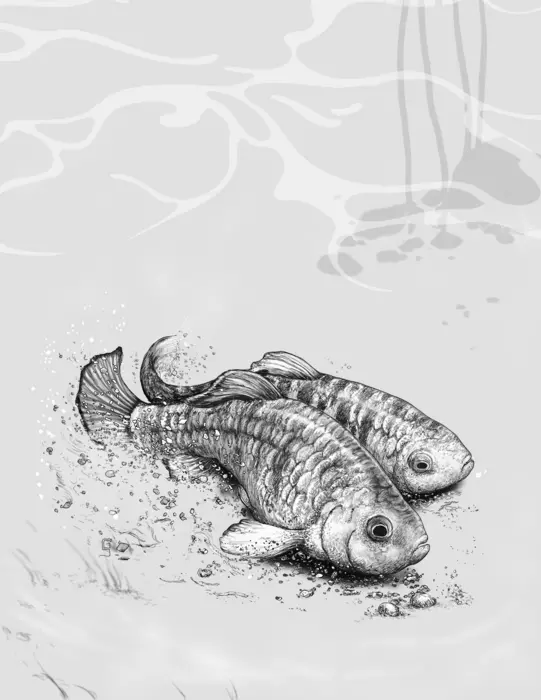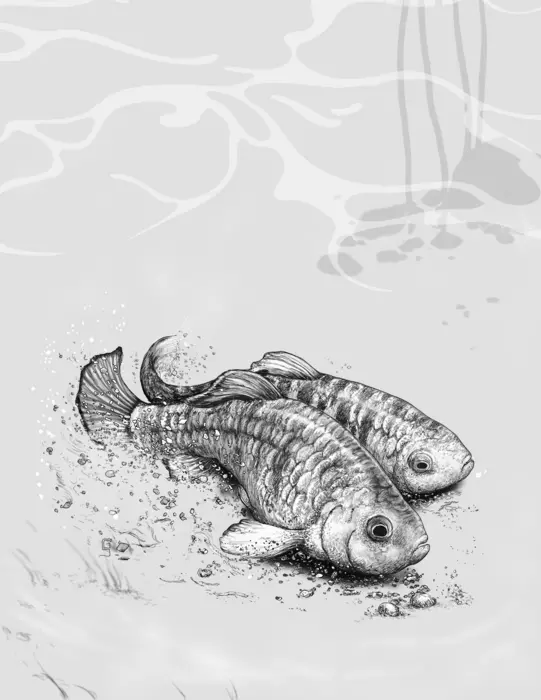Purdue-led fishing expedition nets new pupfish family member in New Mexico

Credit: Purdue University/Gabriela Sinich
Purdue-led fishing expedition nets new pupfish family member in New Mexico
Genetic drift, not natural selection, identified as main factor driving speciation
WEST LAFAYETTE, Ind. Scientists have identified a new member on the genetic family tree of an endangered pupfish native to south-central New Mexico.
“We went into this thinking that there was one species of conservation concern,” said J. Andrew DeWoody, professor of genetics in Purdue University’s Department of Forestry and Natural Resources. “The preponderance of evidence now suggests that there are two species where we thought there was one. So, if we had one endangered species, now we seem to have two.”
DeWoody and eight collaborators from Purdue, Ohio State, Auburn and Texas A&M universities will publish their findings this week in the Proceedings of the National Academy of Sciences (PNAS).
The evolution of the White Sands pupfish into two species is unusual in that genetic drift was the driving force.
Genetic drift results from the random inheritance of different genes from an organism’s parents. Natural selection, by contrast, occurs when populations within a species change over time due to adaptation to diverse habitats.
The two species also diverged unusually quickly.
“Close relatives in mammals diverged from one another, on average, about two million years ago,” DeWoody said. “This is about four hundred times faster than the average mammalian speciation event.”
Cyprinodon tularosa, an endangered species, is native to the Tularosa Basin. Natural populations live in Salt Creek and Malpais Spring. Resource managers established the other two populations in Lost River and Mound Spring in the 1960s and 1970s, probably from Salt Creek.
“We knew they were different, but we did not know the evolutionary force causing this difference,” said Erangi Heenkenda, co-lead author of the PNAS paper who received her PhD in forestry and natural resources from Purdue this month.
The researchers considered selection as the driving evolutionary force because the salinity, water flow and parasites in the environments at Salt Creek and Malpais Spring were quite different, Heenkenda said.
The researchers sequenced the entire genome of individual pupfish. Previous research on these pupfish was based on limited genetic sampling. Heenkenda compared the whole-genome approach described in the PNAS study as reading an entire book instead of only a few pages.
“We expected to see some differences in the genes, but we did not see that difference with respect to selection,” said Heenkenda, who will soon begin working at the National Veterinary Services Laboratories in Ames, Iowa, on an Oak Ridge Institute for Science and Education Postdoctoral Fellowship. But they did not detect any genes that conferred salt tolerance on the fish, for example.
“This divergence appears to have been primarily driven by high levels of genetic drift just over the last, 5,000 years, which we refer to as ‘drift speciation,’” said co-lead author Andrew Black, a former postdoctoral scientist in DeWoody’s research group. Now at Oregon State University’s Center for Quantitative Life Sciences, Black noted that there are many known cases of evolution occurring over dozens or thousands of generations.
“These are typically attributed to natural selection. The relative role of drift is commonly overlooked or ignored in speciation,” Black said. He noted that factors like small populations, geographic isolation and the harsh desert ecosystem that produced population bottlenecks favored genetic drift over natural selection in these pupfish populations.
“It makes me wonder if drift speciation is likely a common mechanism of evolution in other species of desert pupfish, too,” Black said.
The slowly erupting Carrizozo lava flow from a volcano in south-central New Mexico covered about 130 square miles over two or three decades about 5,000 years ago. That barrier likely contributed to the evolution of the new species.
“The genomic data, independently of the geological data, suggested these two species were one somewhere around 5,000 years ago,” DeWoody said. “Then you overlay the geologic data. This Carrizozo lava flow happened about then. It makes sense.”
In their analysis of the pupfish gene variants, the researchers found that the ancestral Malpais Spring population attained a large and stable population of more than 60,000 individuals for a long period. The ancestral population of about 15,000 at Salt Creek and Lost River was also stable.
Both populations underwent bottlenecks — sharp reductions in size — about 2,500 years ago. The bottlenecks affecting the Salt Creek and Lost River populations were far more severe, however, than the one experienced by the Malpais Spring pupfish.
As populations shrink, they experience random fluctuations of gene frequencies, or genetic drift. Small populations experience a great deal of genetic drift, which leaves large populations, such as the massive schools of sardines that ply the oceans, mostly unaffected. In such large populations, DeWoody said, “Natural selection can overpower drift, but in small populations, drift overpowers selection.”
Two populations of the White Sands pupfish previously received designation as meriting enhanced conservation measures. One population consists of the Malpais Spring pupfish. The Salt Creek and Lost River pupfish comprise the other population.
Their results led the researchers to call for a species-level revision of the pupfish’s classification. The scientists recommend that the new species be named “the enchanted pupfish,” a nod to the state of New Mexico, also known as “the Land of Enchantment.”
This study grew out of the biodiversity monitoring research that co-author Brian Pierce of Texas A&M University performs with funding from the U.S. Air Force. Additional funding was provided to Purdue by the U.S. Department of Agriculture’s National Institute of Food and Agriculture.
Journal
Proceedings of the National Academy of Sciences
DOI
10.1073/pnas.2320040121
Method of Research
Experimental study
Subject of Research
Animals
Article Title
Rapid vertebrate speciation via isolation, bottlenecks, and drift
Article Publication Date
20-May-2024
COI Statement
The authors declare no competing interests.





